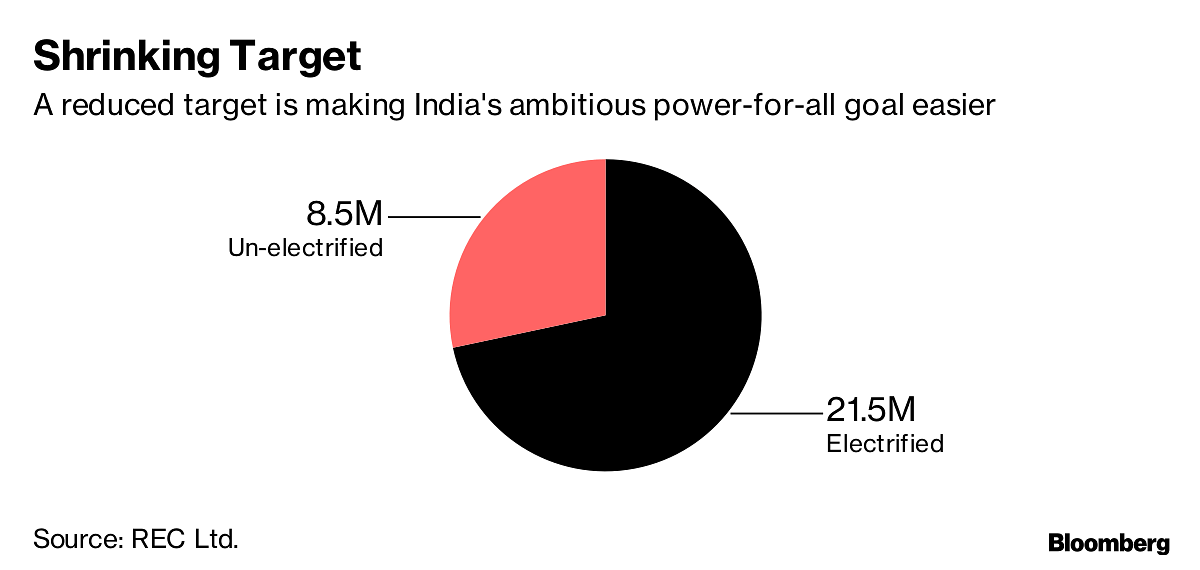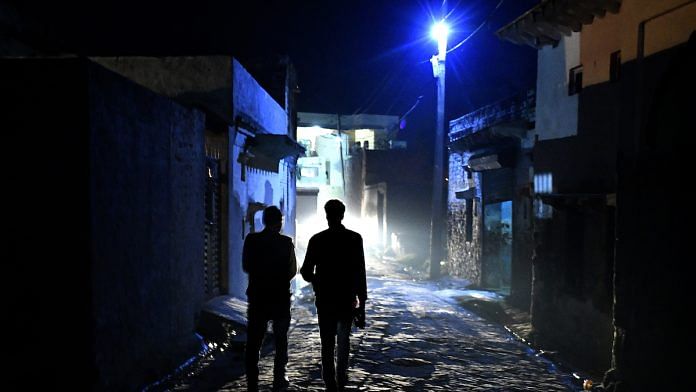Modi set out to electrify nearly 40 million homes last year to fulfill his campaign promise of reliable electricity for every citizen.
Prime Minister Narendra Modi is nearing his deadline to electrify every Indian home.
That job has become a little easier after 10 million homes, or about one-quarter of the goal, were chopped off the list of those in need of power.
The target has been narrowed after on-the-ground surveys revealed large numbers of families that had left their villages and migrated to urban areas, P.V. Ramesh, chairman of REC Ltd., which is implementing the rural electrification program, said in an interview. As well, multiple families living under the same roof have been grouped into one household after they agreed to have a common power connection, Ramesh said.

Modi set out to electrify nearly 40 million homes last year to fulfill his campaign promise of reliable electricity for every citizen. That has been now pruned to 30 million. Nearly 72 percent of the revised number of homes have already received a connection, latest government data shows. The country is on pace to electrify all households by Dec. 31, Power Minister R.K. Singh said last month. The next deadline is for 24×7 access to power by March 31.
Modi has repeatedly cited energy reforms, such as providing wider access to electricity and cleaner cooking fuel, as signs of the country’s progress under his Bharatiya Janata Party-led government. Completion of the household electrification program would feature prominently on Modi’s report card ahead of federal elections next year.
“The success of this program is important for BJP, because it concerns the poor whose vote can swing the 2019 elections one way or the other,” said Sandeep Shastri, a political scientist at the Jain University in Bengaluru. “In 2014 elections, BJP got less support from the poor people than from the affluent ones. That explains why the government is so keen to showcase such pro-poor schemes.”
Closer Scrutiny
Modi announced in April that all villages in the country had access to electricity, putting himself a step closer to fulfilling his commitment of providing round-the-clock power to all Indians. The International Energy Agency in its latest annual World Energy Outlook hailed India as a “star performer” in global efforts toward universal electrification.
Even so, Modi’s administration has avoided closer scrutiny of the electrification work. Around the time he tweeted a claim that the last village had been connected, access to an online database providing village-level details of the progress stopped showing names of the targeted villages. As well, areas were considered electrified if only 10 percent of its households had power, leaving swathes of rural India still in the dark even as the village-level electrification goal was lauded as a success.
“Even if the government reaches close to electrifying 100 percent households, it will be a significant achievement,” said Ann Josey, a senior researcher at Prayas, a non-profit advocacy group that focuses on energy, health and education. “But the bigger challenge will begin after the connections are provided, which is to ensure reliable and affordable supplies.” – Bloomberg






